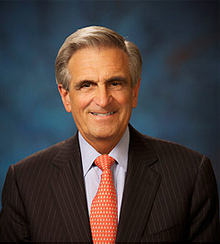The consumer decision journey
Consumers are moving outside the purchasing funnel—changing the way they research and buy your products. If your marketing hasn’t changed in response, it should.

In This Article
- Interactive: The consumer decision journey—an interactive
- Exhibit 1: In the traditional funnel metaphor, consumers start with a set of potential brands and methodically reduce that number to make a purchase.
- Exhibit 2: The decision-making process is now a circular journey with four phases.
- Exhibit 3: The number of brands added for consideration in different stages differs by industry.
- Exhibit 4: Two-thirds of the touch points during the active-evaluation phase involve consumer-driven activities such as Internet reviews and word-of-mouth recommendations from friends and family.
If marketing has one goal, it’s to reach consumers at the moments that most influence their decisions. That’s why consumer electronics companies make sure not only that customers see their televisions in stores but also that those televisions display vivid high-definition pictures. It’s why Amazon.com, a decade ago, began offering targeted product recommendations to consumers already logged in and ready to buy. And it explains P&G’s decision, long ago, to produce radio and then TV programs to reach the audiences most likely to buy its products—hence, the term “soap opera.”
Marketing has always sought those moments, or touch points, when consumers are open to influence. For years, touch points have been understood through the metaphor of a “funnel”—consumers start with a number of potential brands in mind (the wide end of the funnel), marketing is then directed at them as they methodically reduce that number and move through the funnel, and at the end they emerge with the one brand they chose to purchase (Exhibit 1). But today, the funnel concept fails to capture all the touch points and key buying factors resulting from the explosion of product choices and digital channels, coupled with the emergence of an increasingly discerning, well-informed consumer. A more sophisticated approach is required to help marketers navigate this environment, which is less linear and more complicated than the funnel suggests. We call this approach the consumer decision journey. Our thinking is applicable to any geographic market that has different kinds of media, Internet access, and wide product choice, including big cities in emerging markets such as China and India.
Marketing has always sought those moments, or touch points, when consumers are open to influence. For years, touch points have been understood through the metaphor of a “funnel”—consumers start with a number of potential brands in mind (the wide end of the funnel), marketing is then directed at them as they methodically reduce that number and move through the funnel, and at the end they emerge with the one brand they chose to purchase (Exhibit 1). But today, the funnel concept fails to capture all the touch points and key buying factors resulting from the explosion of product choices and digital channels, coupled with the emergence of an increasingly discerning, well-informed consumer. A more sophisticated approach is required to help marketers navigate this environment, which is less linear and more complicated than the funnel suggests. We call this approach the consumer decision journey. Our thinking is applicable to any geographic market that has different kinds of media, Internet access, and wide product choice, including big cities in emerging markets such as China and India.






















